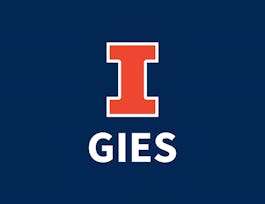Stanford's "Introduction to Statistics" teaches you statistical thinking concepts that are essential for learning from data and communicating insights. By the end of the course, you will be able to perform exploratory data analysis, understand key principles of sampling, and select appropriate tests of significance for multiple contexts. You will gain the foundational skills that prepare you to pursue more advanced topics in statistical thinking and machine learning.



Introduction to Statistics

Instructor: Guenther Walther
Sponsored by BrightStar Care
535,275 already enrolled
(3,775 reviews)
Recommended experience
Skills you'll gain
- Business Analytics
- Statistical Analysis
- Sampling (Statistics)
- Statistical Methods
- Data Collection
- Statistical Inference
- Probability & Statistics
- Analytics
- Statistical Hypothesis Testing
- Applied Mathematics
- Statistics
- Probability
- Data Science
- Mathematical Modeling
- Regression Analysis
- Exploratory Data Analysis
- Data Analysis
- Statistical Modeling
- Descriptive Statistics
- Mathematics and Mathematical Modeling
Details to know

Add to your LinkedIn profile
13 assignments
See how employees at top companies are mastering in-demand skills


Earn a career certificate
Add this credential to your LinkedIn profile, resume, or CV
Share it on social media and in your performance review

There are 12 modules in this course
This module provides an overview of the course and a review of the main tools used in descriptive statistics to visualize information.
What's included
10 videos4 readings2 assignments
In this module, you will look at the main concepts for sampling and designing experiments. You will learn about curious pitfalls and how to evaluate the effectiveness of such experiments.
What's included
6 videos1 assignment
In this module, you will learn about the definition of probability and the essential rules of probability that you will need for solving both simple and complex challenges. You will also learn about examples of how simple rules of probability are used to create solutions for real-life complex situations.
What's included
8 videos1 assignment
This module covers the empirical rule and normal approximation for data, a technique that is used in many statistical procedures. You will also learn about the binomial distribution and the basics of random variables.
What's included
10 videos1 assignment
In this module, you will learn about the Law of Large Numbers and the Central Limit Theorem. You will also learn how to differentiate between the different types of histograms present in statistical analysis.
What's included
9 videos1 assignment
This module covers regression, arguably the most important statistical technique based on its versatility to solve different types of statistical problems. You will learn about inference, regression, and how to do regression diagnostics.
What's included
10 videos1 assignment
In this module, you will learn how to construct and interpret confidence intervals in standard situations.
What's included
4 videos1 assignment
In this module, you will look at the logic behind testing and learn how to perform the appropriate statistical tests for different samples and situations. You will also learn about common misunderstandings and pitfalls in testing.
What's included
9 videos1 assignment
This module focuses on the two main methods used in computer-intensive statistical inference: The Monte Carlo method, and the Bootstrap method. You will learn about the theoretic principles behind these methods and how they are applied in different contexts, such as regression and constructing confidence intervals.
What's included
5 videos1 assignment
This module focuses on the three important statistical analysis for categorical data: Chi-Square Goodness of Fit test, Chi-Square test of Homogeneity, and Chi-Square test of Independence.
What's included
3 videos1 assignment
This module covers the basics of ANOVA and how F-tests work on one-way ANOVA examples.
What's included
5 videos1 assignment
In this module, you will learn about very important issues that have surfaced in the era of big data: data snooping and the multiple testing fallacy. You will also explore the reasons behind challenges in data reproducibility and applicability, and how to prevent such issues in your own work.
What's included
3 videos1 reading1 assignment
Instructor

Offered by
Why people choose Coursera for their career




Learner reviews
3,775 reviews
- 5 stars
71.29%
- 4 stars
19.53%
- 3 stars
5.13%
- 2 stars
1.97%
- 1 star
2.05%
Showing 3 of 3775
Reviewed on Jul 23, 2023
Gives all the necessary and basic skills needed for a potential college level statistics course. Videos and lessons are a little hard to follow through major jumps in topics. 4/5 stars.
Reviewed on Aug 11, 2022
Gives a great overview of every important topic in statistics. However, lots of things aren't explained thoroughly. I had to use other websites to gain a sufficient understanding of lots of material.
Reviewed on Nov 17, 2023
The course was incredibly informative. I am glad that I got the opportunity to study in a course on statistics from Stanford University itself. I thank the creators and participants of the course!
Recommended if you're interested in Data Science

American Psychological Association

University of Illinois Urbana-Champaign

American Psychological Association

Open new doors with Coursera Plus
Unlimited access to 10,000+ world-class courses, hands-on projects, and job-ready certificate programs - all included in your subscription
Advance your career with an online degree
Earn a degree from world-class universities - 100% online
Join over 3,400 global companies that choose Coursera for Business
Upskill your employees to excel in the digital economy


